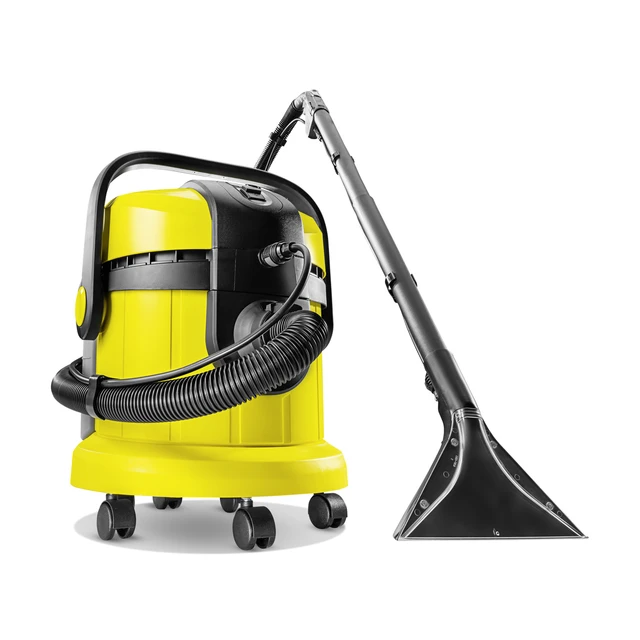Introduction:
The suction power of a vacuum cleaner is a crucial factor in its cleaning performance. It is what enables the vacuum to pull in dirt, dust, and debris from various surfaces. Understanding the mechanisms that create suction in a vacuum cleaner can help users make informed decisions when choosing a vacuum and optimize its cleaning efficiency. In this article, we will explore the different components and technologies that work together to create suction in a vacuum cleaner, including the motor, fan, filtration system, and airflow design. By understanding these elements, users can better appreciate the science behind the suction power of their vacuum cleaner.

What creates suction in vacuum cleaner?
The Role of the Motor:
The motor is a key component that drives the suction power of a vacuum cleaner. It creates the necessary airflow by generating suction force through its operation. Here’s how the motor contributes to creating suction:
a. Electric Motor: Most modern vacuum cleaners use an electric motor to power their suction. The motor spins a fan or impeller at high speeds, creating airflow and generating suction.
b. Brushless Motors: Some advanced vacuum cleaners feature brushless motors, which are more efficient, durable, and quieter than traditional brushed motors. Brushless motors use electronic circuits to control the rotation of the motor, optimizing its performance.
c. Power Rating: The power rating of the motor, expressed in watts, is often associated with the suction capability of a vacuum cleaner. However, it is important to note that other factors, such as airflow design and filtration system, also influence suction power.
The Role of the Fan:
The fan or impeller is another critical component that contributes to creating suction in a vacuum cleaner. It is directly linked to the motor and helps generate airflow. Here’s how the fan works to create suction:
a. Centrifugal Force: The fan’s spinning motion creates centrifugal force, which pushes air outward from the center. This creates a low-pressure area in the center of the fan, resulting in suction.
b. Blade Design: The design of the fan blades determines the efficiency and effectiveness of the suction. Different blade shapes and angles can optimize airflow and enhance suction power.
c. Multi-Stage Fans: Some advanced vacuum cleaners employ multi-stage fans or impellers to increase suction power. These fans have multiple stages or layers, which further intensifies the suction force as air passes through each stage.
The Role of the Filtration System:
The filtration system in a vacuum cleaner plays a crucial role in maintaining suction power by preventing clogs and maintaining airflow. It ensures that dust and debris are effectively captured and filtered out. Here’s how the filtration system supports suction:
a. Airflow Efficiency: A well-designed filtration system helps maintain optimal airflow throughout the vacuum cleaner. By efficiently capturing and containing dust and debris, it prevents blockages that can reduce suction power.
b. Different Filtration Technologies: Vacuum cleaners employ various filtration technologies, including cyclonic, bagged, and bagless systems. Each filtration system has its own advantages and may have different effects on suction power and overall cleaning performance.
c. Regular Maintenance: To ensure continued suction power, it is important to clean or replace filters regularly, as clogged or dirty filters can hinder airflow and reduce suction efficiency.
The Role of Airflow Design:
The overall design and engineering of a vacuum cleaner’s airflow system greatly influence its suction power. Here’s how airflow design contributes to the creation of suction:
a. Airflow Path: The airflow path within the vacuum cleaner determines how effectively air is drawn in and pushed out. A well-designed airflow path ensures efficient movement of air, resulting in optimal suction power.
b. Sealed System: A sealed or closed system is crucial in maintaining suction power. It prevents air leaks and ensures that all the suction power is directed toward picking up dirt and debris.
c. Nozzle Design: The design of the vacuum cleaner nozzle or head also affects suction power.
d. Hose and Wand Design: The design of the hose and wand affects airflow and suction power. Smooth, wide-diameter hoses and wands minimize air resistance and allow for efficient airflow, maximizing suction performance.
Conclusion:
The creation of suction in a vacuum cleaner is a complex process that involves various components and technologies working together. The motor drives the airflow, while the fan generates suction force. The filtration system helps maintain airflow efficiency and prevents clogs. The overall airflow design determines how effectively air is drawn in and pushed out. Understanding these elements allows users to appreciate the science behind suction power and make informed decisions when purchasing or optimizing a vacuum cleaner. By selecting a vacuum cleaner with a powerful motor, efficient filtration system, and well-engineered airflow design, users can ensure optimal suction power and maximize their cleaning efficiency.

